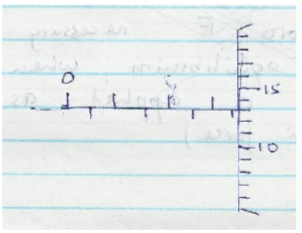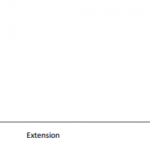KNEC KCSE Physics Paper 1 – 2014 Gatundu Mock
2014 Gatundu Mock
Physics Paper 1
SECTION A (25 Marks)
Answer ALL questions in section A
The figure below shows a micrometer screw gauge used to measure the diameter of a metal rod.
When the rod is removed and the jaws of the micrometer screw gauge are closed, the reading is
0.12mm. Determine the diameter of the rod.
2 marks
Explain why it is advisable to use a pressure cooker for cooking at high altitudes.
2 marks
The cross sectional area of cylinder B below is double that of cylinder A.
Determine the force F necessary to keep the system in equilibrium when a force of 20N is applied
as shown (ignore friction force)
3 marks
The figure below shows a flask air tightly fitted with a glass tube dipped into a beaker containing
water at room temperature.
State giving a reason what is observed when ice-cold water is poured on the flask.
2 marks
Other than temperature state one other factor that affects the surface tension of water.
1 marks
Explain why the smell of rotten eggs broken at one end of the room soon spreads throughout the
room.
1 marks
200cm3 of oxygen is collected at 27oC and 75cm Hg. What is its volume at 0oC and 76cm Hg?
2 marks
A bottle has a mass of 0.0185 kg when empty and 0.0425kg when full of a liquid. If the bottle has a
capacity of 2.0 x 10-5m3, calculate the density of the liquid in g/cm3
2 marks
The figure below shows an athlete lifting weights while standing with the feet apart.
Explain why standing with the feet apart improves the athlete’s stability.
1 marks
An object of weight 20N attached at the end of a spring causes an extension of 0.5cm on the spring.
(a) Determine the spring constant of the spring. (2 marks)
(b) Determine the weight of an object that would cause an extension of 0.86cm when attached at
the end of the same spring. (2 marks)
4 marks
The figure below shows a horizontal tube with two vertical tubes x and y. Water flows through the
horizontal tube from right to left. The water level in tube x is higher than water level in tube y.
Explain the observation.
2 marks
The weight of a solid in air is 5.0N. When it is fully immersed in a liquid of density 800kg/m3, its
weight is 4.04N.
Determine
(a) The upthrust in the liquid. (1 mark)
(b) The volume of the solid. (2 marks)
3 marks
SECTION B (5 Marks)
Answer ALL questions in section B
(a) What is a machine? (1 mark)
(b) Two gear wheels have 80 teeth (driven) and 20 teeth (driving) and lock with each other. They are
fastened on axles of equal diameters such that a weight of 150N attached to a string wound one
axle will just raise 450N on the other axle. Calculate:
(i) Mechanical advantage (2 marks)
(ii) Velocity ratio (2 marks)
(iii) Efficiency of the machine (2 marks)
(c) The figure below shows a hydraulic press that is worked by applying a force of 80N at the end of
a lever 28cm long pivoted at 4cm away from the other end, the plunger being 4cm from the pivot.
The area of the piston P is 2cm2 and that of Q is 10cm2.

(d) The graph below shows the variation of force with distance for a body being towed.
Calculate the total work done on the body. (3 marks)
12 marks
(a) The figure below shows a velocity time graph for the motion of a certain body.
Describe the motion of the body in the region:
(i) OA (1 mark)
(ii) AB (1 mark)
(iii) BC (1 mark)
(b) A car moving initially at 10ms-1 decelerates at 2.5ms-2.
(i) Determine;
I. Its velocity after 1.5s. (2 marks)
II. The distance traveled in 1.5s. (2 marks)
III. The time taken for the car to stop. (2 marks)
(ii) Sketch velocity time graph for the motion of the car up to the time car stopped.(1 mark)
(iii) From the graph, determine the distance the car traveled before stopping. (2 marks)
12 marks
(a) State Newton’s second law of motion and use it to define a unit force i.e. the Newton. (2 marks)
(b) An arrow of mass 100g traveling horizontally at 15m/s hits a block of wood of mass 400g lying
at rest on a smooth surface. Calculate.
(i) The common velocity after the impact. (2 marks)
(ii) The change in kinetic energy if the block is then struck by a second similar arrow traveling in
the opposite direction but with horizontal velocity of 12m/s. (3 marks)
(c) The figure below is graph showing the velocity of a body plotted against time.
(i) Describe the motion of the body over
CD (1 mark)
DE (1 mark)
EF (1 mark)
(ii) What is the acceleration of the body over the region OB? (1 mark)
(iii)What is the average velocity over the total journey? (2 marks)
13 marks
In an experiment to investigate the variation of centripetal force F force with radius r of a circle
in which a body revolves the following results were obtained.
| Mass (g) | 60 | 50 | 40 | 30 | 20 |
| Radius r (cm) | 50 | 41 | 33 | 24 | 16 |
(i) Plot a graph of force F in Newton’s against the radius r in metres. (7 marks)
(ii) Given that the mass of the body is 100g use the graph to determine the angular velocity w.(3 marks)
(iii) State 2 applications of circular motion. (2 marks)
12 marks
The figure below shows a hydraulic press used to compress a bale.
(i) Explain briefly how a force applied on the lever compresses the bale. (4 marks)
(ii) Given that area of piston B is 18cm2 and that of piston A is 3.0cm2 and a force of 2N is applied to
piston A, find the force produced on the larger piston. (2 marks)
6 marks















